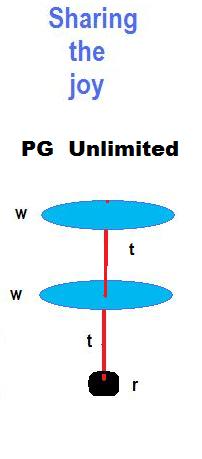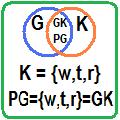|
 Sharing the joy Sharing the joy

with friends around the world:
Paragliders are gliding kites:: PG=GK
Flying kites are a complex of three subassemblies:
{wing set, tether set, resistive set} = {w,t,r}
Let G be the set of gliders in air, water, or other
fluid.
Let K be the set of kites.
Label the non-empty intersection of G with K be labeled GK or PG.
Paragliders as used in paragliding, so far, are members of GK=PG.
Let W be the wing set. Let any wing be in W.
That is, W holds elements that may be fully limp or fully solid or any
amount of solidity or stiffening between the extremes. W holds also all
manner of rotating wings as all forms of fixed or flexible wings. W holds
any shape of wing. W holds morphable wings also. Any element of W may be
employed in air PGs or water PGs (gliding paravanes).
Let w be a wing set employed in a PG; w may consist of one or more
elements, even up to high count.
Let t be the tether set of PG; t may consist of one element or more up to
even high count.
Let r be the resistive set for PG and note that r may consist of one
element or many elements up to high count.
Tension in t brought about by falling/kiting of r in
reaction to actions of w in media (air, water, gases, liquids, flowing
matter) together with passive or active controls may be configured to give
effective gliding.
Some extremes to illustrate instantiations that result in PG:
1. Take the wing of a 747 airliner. Have one or more tethers to that wing.
Hang at the bottom of that tether set a mass that fits purposes. Set the
complex into free air for a falling and watch the paraglider do its
gliding. Have any manner of controls: string control to aerodynamic
surfaces, electrical wire sending signals and power to servos on the wing,
radio control of servos, etc. Many choices for passive or active
controlling of the paraglider.
2. Take a wing from a gyroglider. Tether that wing to a
hung mass below. Set the arrangement in fall and see the paraglider
occurring that has a vertical-axis rotary wing.
3. Take flip-wing and bridle at the ends of its rotation axis; hang a
resistive mass via a tether set (one or more lines). Set this in fall and
have a horizontal-axis winged paraglider.
4. Take a set of power kites and stack them with tethers
for a wing set; tether the stack or train of wings to a lower hung mass
driver; set the total metakite into fall in air and have a paraglider with
multiple wings.
5. Take a limp canopy Jalbert airfoil evolute parafoil
wing and hang by lines a massed resistive set of harness and person; set
into fall in air and have yourself a paraglider that is more familiar to
you. (Or similarly for Barish glide wing or Rogallo parawing)
6. Be a spider; spin some silk and shoot the silk up into
updrafts; hang on. When you are lifted about and the undulating wafting
set of lines play the role of both wing and tether, then know yourself,
Spider, as a paraglider in a paraglider.
I am glad to share my joy with my friends here in this forum, as you have
played a part in this matter, for sure; and I have deep thanks to those
who have participated in the preambles to this joy opportunity. Plus karma
nod is one way for you to get onto this flight of joy. I set this
tech and its very announcement into public domain, free for any purpose in
any arena or space.
Wishing you and yours the best of lift for your paragliders,
no matter the design,
Joe Faust
October 20, 2011, filed at
http://energykitesystems.net/WPGA/JoyGpgK.html
PS: PGs are elements in a proper subset of these
supersets: HGs, Ks, Gs. All above has its water PG analogue.
PPS: Feel free to add RATs to PGs to obtain FF-AWECS.
PPPS:
A
B
C
D
E
F
G
H
I
J
K
L
M
N
O
P
Q
R
S
T
U
V
W
X
Y
Z
FALSE: "Paragliding is an adventure sport featuring
lightweight, free-flying, foot-launched glider aircraft that possess no
rigid primary structure." Not generally true, as the craft may have
as much rigidity as wanted to accomplish particular interests and
purposes.
MORE ACCURATE: Paragliding uses paragliders (gliding
kites) which may have as much rigidity in their primary structure as one
wishes for purpose. Purpose may be far beyond sport, e.g., play,
recreation, science, commerce, military, industry, art, photography, etc.
|
 Sharing the joy
Sharing the joy

